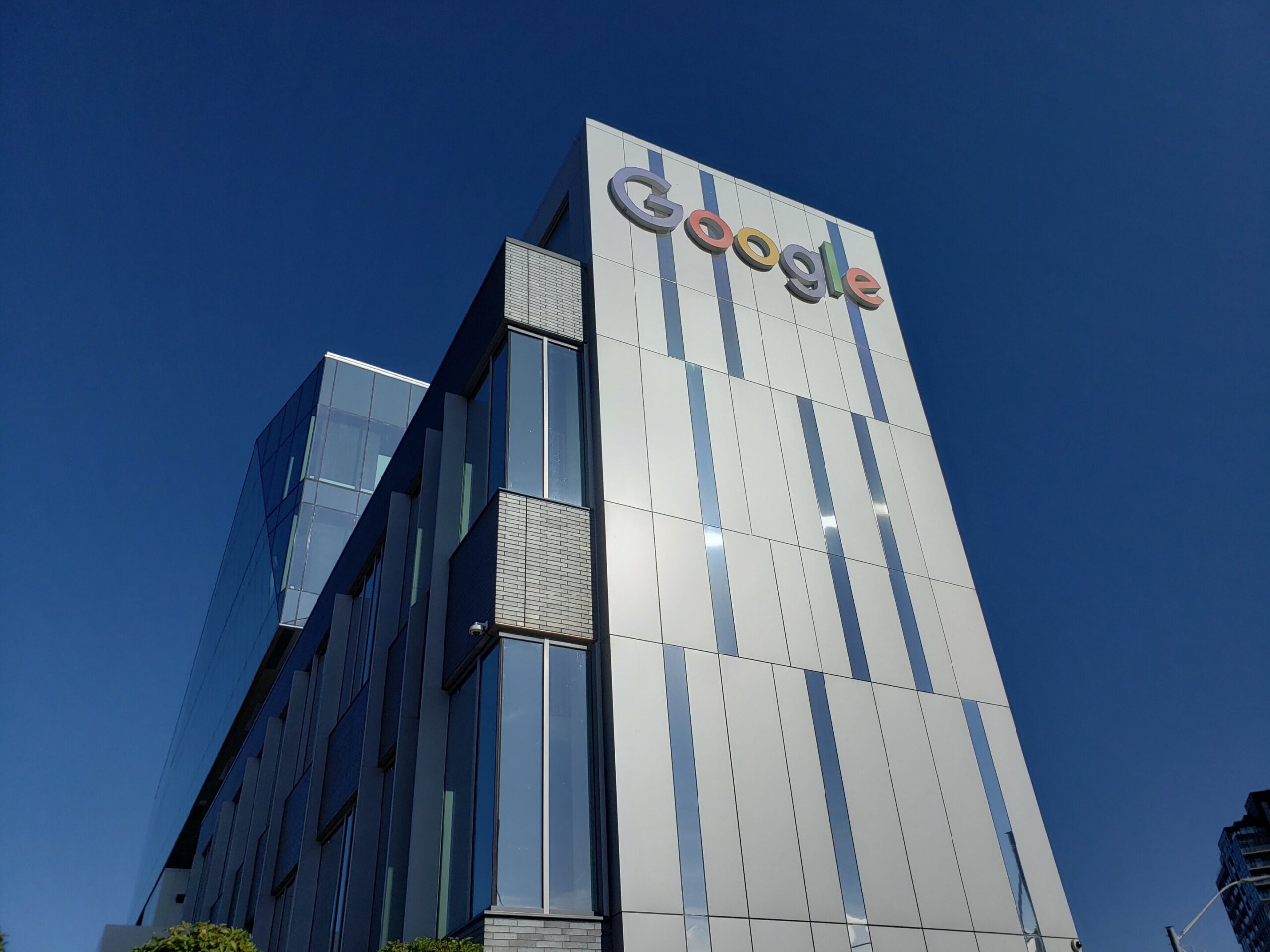Tech
Google avoids being dismantled after US court battle—and it’s down to the rise of AI

A year ago, Google faced the prospect of being dismantled. Today, artificial intelligence (AI) and a new court judgment has helped it avoid this fate. Part of the reason is that AI poses a grave threat to Google’s advertising revenues.
“Google will not be required to divest Chrome; nor will the court include a contingent divestiture of the Android operating system in the final judgment,” according to the decision.
Google must share certain data with “qualified competitors” as deemed by the court. This will include parts of its search index, Google’s inventory of web content. Judge Mehta will allow Google to continue paying companies like Apple and Samsung to distribute its search engine on devices and browsers. But he will bar Google from maintaining exclusive contracts.
The history of this decision goes back to a 2024 ruling by federal judge Amit Mehta. It found that Google maintained a monopoly in the search engine market, notably by paying billions to companies including Apple and Samsung to set Google as the default search engine on their devices.
Almost a year later, the same US judge issued his final ruling, and the tone could not be more different. Google will not be broken up. There will be no choice screen on new phones.
The nature of the search engine market, where more users generate more data, and more data improves search quality, made it impossible for competitors to challenge Google, the court found in 2024.
The 2024 ruling itself was controversial. While high quality data enables a dominant firm to extract more profit from consumers, it also allows it to provide a better service. Decades of research in economics has shown that determining which effect is more important is not straightforward.
At the time, the US Department of Justice deemed the issue so serious that it considered breaking up Google as the only viable solution. For instance, it suggested forcing the company to sell its web browser, Google Chrome.
The government also proposed forcing device manufacturers to offer users a choice of search engines during set up, and compelling Google to share most of its data on user behavior and ad bidding, where advertisers compete in auctions to get their ads shown to users for a specific search query or audience. These so-called “remedies,” measures Google would be required to implement to end its monopoly, aimed to restore competition.
Limited sharing
So, what has changed in a year to so radically change the perception of Google’s market dominance? The main answer is AI—and specifically, large language models (LLMs) like ChatGPT, Claude, and Google’s own Gemini. As users increasingly turn to LLMs for web searches, Google responded by placing AI-generated summaries at the top of its search results.
The way people navigate the internet is quickly evolving, with one trend reshaping the business models of online companies: the zero-click search. According to a Bain & Company survey, consumers now default to accepting AI-generated answers without further interaction. The data is striking: 80% of users report being satisfied with AI responses for at least 40% of their searches, often stopping at the summary page.
Threat to ad revenue
This AI-driven shift in consumer behavior threatens not only Google’s business model but also that of most internet-based companies. Advertising accounts for roughly 80% of Google’s revenue, earned by charging companies for prominent placement in search results and by leveraging its vast amount of user data to sell ad space across the web. If users stop clicking links, this revenue stream evaporates.
More importantly for this ruling, the market Google once monopolized may no longer be the relevant one. Today, Google’s primary potential competitors in search are not Microsoft Bing, but AI models like ChatGPT, Claude, and Perplexity. In the global race for AI dominance, the outcome is far from certain.
From an antitrust standpoint, there is little justification for penalizing Google now or forcing it to cede advantages to competitors. What would be the benefit for consumers of forcing Google to accept the £24.6 billion offer from Jeff Bezos’ Perplexity AI to buy the Chrome browser?
In essence, the judge acknowledges that Google monopolized the search engine market for a decade but concludes that the issue may resolve itself in the years ahead.
This situation echoes the first major monopolization case: Internet Explorer. For years, European and US regulators battled Microsoft to dismantle the dominance of its web browser, which was bundled with the then-dominant Windows 95 operating system.
By the time all appeals were exhausted, however, the monopoly had vanished. Internet Explorer was partly a victim of the rise of smartphones, which did not rely on Windows. The new king in town was a newcomer: a certain Google Chrome.
How you view the economic and political power of tech giants will shape which lesson you draw from this story. An optimistic view I suggested (with the economist Jana Friedrichsen) is that winner-takes-all markets can intensify competition through innovation. In such markets, incremental investment is not enough; to challenge Google, a competitor must offer a vastly superior product to capture the entire market.
Precisely because they ruthlessly defend their monopoly positions, tech giants show competitors that the potential gains from radical innovations are massive. The pessimistic view, however, is that years of dominance have left these firms largely unaccountable, which could embolden them in future.
This article is republished from The Conversation under a Creative Commons license. Read the original article.![]()
Citation:
Google avoids being dismantled after US court battle—and it’s down to the rise of AI (2025, September 6)
retrieved 6 September 2025
from https://techxplore.com/news/2025-09-google-dismantled-court-ai.html
This document is subject to copyright. Apart from any fair dealing for the purpose of private study or research, no
part may be reproduced without the written permission. The content is provided for information purposes only.
Tech
Terrifying New Photos Emerge From the Jeffrey Epstein Estate

A New York Times spokesperson told WIRED in a statement that Brooks “regularly attends events to speak with noted and important business leaders to inform his columns,” and that Brooks had no contact with Epstein before or after attending the 2011 dinner where the photo was taken.
A representative for the Gates Foundation did not immediately respond to a request for comment, nor did representatives for Google, Allen, Chomsky, and Bannon’s War Room podcast.
The release also includes closeups of women’s body parts with quotes from Vladimir Nabokov’s book Lolita scrawled onto them, a photo of a pill bottle labelled with a medication usually used to relieve the symptoms of urinary tract infections, and redacted images of travel documents from several countries, including Ukraine and Lithuania.
The House committee’s investigation into Epstein has been going on for several months, and is separate from the document dump expected to be released by the US Department of Justice this week. The Epstein Files Transparency Act, which was signed into law last month, requires the DOJ to release “all unclassified records, documents, communications, and investigative materials” in its possession by December 19.
As part of the investigation, the committee subpoenaed the Epstein estate, and included instructions for the estate to produce two separate sets of documents—one to the Democrats on the committee, the other to Republicans. As the committee has been receiving documents from the estate, both Democrats and the committee as a whole have done their own releases. Material in these releases has raised new questions about the well-documented relationship between Epstein and president Donald Trump; among other things, it shows Epstein claiming intimate knowledge of Trump’s views in exchanges with a Gates adviser.
Documents related to investigations into Epstein have overshadowed the first year of the second Trump administration, several members of which made the release of the documents a central talking point in the lead up to the 2024 presidential election. The political dynamics have shifted over the past year, as it became clear that Trump, a one-time friend of Epstein’s, appears repeatedly in the investigative record.
“As we approach the deadline for the Epstein Files Transparency Act, these new images raise more questions about what exactly the Department of Justice has in its possession.” said Representative Robert Garcia, the ranking Democratic member on the committee, in a press release. “We must end this White House cover-up, and the DOJ must release the Epstein files now.”
Tech
Meet the Linen Sheets That Will Last You a Lifetime

Comparing Our Favorite Linen Sheets
Honorable Mentions
Not all sheets are created equal. The linens below are good but not as great as our picks above.
Avocado Natural Linen Sheets for $549: These were our previous organic pick, but they’re no longer GOTS-certified or marked organic by Avocado. These are still great, heavyweight linen sheets, and still have an Oeko-Tex certification to confirm no toxic materials were used during production.
Brooklinen Washed Linen Core Set for $359: This is the updated version of these linen sheets, but they feel similarly to the previous edition; a little itchy at the start compared to our other picks, and felt a little warm to sleep on too. They’re solid linen sheets, and often have new colors available (seasonal colorways do sell out fast) but all of our picks are softer, and some are cheaper, too.
Buffy Belgian Linen Sheet Set for $279: These sheets feel rough if you touch them with just your hand or sit on the sheets, but lying down entirely on these, they felt much more comfortable. These are solid, breathable linen sheets with flax sourced from Belgium. Both my husband and I had insane dreams the week we slept on these sheets, so if you’re looking for more fun dreams, give these affordable linen sheets a whirl.
Company Store Legends Hotel Washed Linen Sheet Set for $357: If you’re looking for something with a little more heft but don’t want to drop $500+, then The Company Store’s Legends Hotel Washed Linen Sheets sit nicely in the middle of price and weight. These sheets have a little more weight than The Citizenry and Pottery Barn, but don’t feel as heavy as Cultiver and Rough Linen. Many colors and sizes are currently out of stock, though.
Cozy Earth Linen Duvet Cover for $288: This cover has a great softness to it and feels ideal for summertime, but the zipper on my set broke almost immediately. It could just be bad luck, since we usually love Cozy Earth’s home goods.
Ikea Dytag Duvet Cover: My favorite linen duvet cover and pillowcase set from Ikea has been replaced with a few different cheaper lines, including the Angslilja ($40) and Strandlummer ($65). My Dytag lasted me a few years, though cheaper linen sets might not last as long as that set did.
Naturepedic Organic Linen Fitted Sheet & Pillowcases Set for $305: This set is heavy, but still manages to be really breathable; it was downright chilly to sleep on alone in the winter. It’s also a rare organic set, with GOTS-certified organic flax used. There’s no top sheet available right now, but you can get a fitted sheet and two pillowcases together, or separately.
Rough Linen Orkney Sheets for $498: WIRED reviewer Scott Gilbertson loves these super heavyweight linen sheets, and says they’re best for confirmed linen lovers with how heavy and rough they are. They’re completely sold out, otherwise they’d be a pick in the guide. We’ll reinstate them once they’re back in stock.
Rough Linen Smooth Linen Sheets for $498: These linen sheets live up to the name with a silky, smooth feel, like a linen twist on sateen. They were a little heavy for my liking, but if that’s up your alley, it’s a beautiful set of sheets that will last.
Slumber Cloud Performance Linen Blend for $329: This is a blend set that uses Slumber Cloud’s patented Outlast fiber, which is part of what makes the brand’s cooling Tencel lyocell sheets so good. These linen blend sheets were soft to the touch, but didn’t pack as cooling of an experience compared to regular linen and Slumber Cloud’s other sheets.
Thuma Flax Linen Sheet Set for $315: These linen sheets from the famed Thuma were solid all-around linen, keeping me nice and cool. (So cool that they’re a pick in our cooling sheets guide.) They also had a good weight and structure to them. They’re not quite as soft as our picks above, but were still a little softer than other options like Brooklinen.
FAQs
What’s So Great About Linen?
Linen is a woven fabric made from flax plants. It’s a highly breathable material that doesn’t trap heat, so it keeps you cool during warmer nights. It’s great for people who sleep hot. It’s rougher at first than a simple cotton sheet set, but it should soften up the more it’s washed. Linen is often more expensive than other sheets, but it’s generally more durable than percale or other cotton weaves, so a good sheet set should last a long time.
It does tend to be more expensive since flax is more time-consuming to harvest and process into sheets, but high-quality linen should last you for years to come, making it an investment in both staying cool (which is very important for sleep quality) but also in gorgeous bedding you can enjoy for years. The structure of linen always lends a nice-styled look to even the messiest of beds, too. I love sleeping on linen so long as it isn’t too scratchy, which is one of the many things I looked for while testing and searching for the best linen sheets.
It’s not for everyone, but if you love linen apparel, you’ll probably love linen sheets. If you’re unsure, start with a single piece (like a duvet or flat sheet) and see what you think. Most of the options we recommend come in a linen set, but you can also buy many of these pieces separately, allowing you to try a linen pillowcase or fitted sheet before wading into a full-on linen bed.
You’ll often see terms like “Belgian flax” and “European linen” used to describe various linens. Some of these are in the name, some aren’t—Pottery Barn’s sheets are named Belgian flax, while The Citizenry’s sheets mention that they’re French flax but sustainably made in Portugal. So what does it all mean? Which is best?
Europe has a long history of growing flax and making linen. It’s a preferred source, particularly Belgium and France, which is why some sheets will call out those countries specifically. But according to World Linen, there isn’t a huge difference among European countries—it’s mostly a marketing tactic. You’ll likely be just as happy with any European source of linen, and there is a European Linen certification sheets can receive to confirm that’s where they’re sourced from.
Having Europe in the name doesn’t necessarily mean it was made there, though. After the flax is grown, it needs to be processed, spun, and woven into sheets, which may or may not happen in Europe. Some companies use the term “Belgian flax” or “European flax” to signify that the flax is from that area, but it wasn’t processed there. Some companies make sheets in other European countries, like The Citizenry’s Portugal-made sheets, while other makers might do production outside of Europe, like Quince, which processes its sheets in China and India.
Does Linen Use Thread Count?
You won’t usually see thread counts listed for linen sheets, or even if you do, there’s another term you’ll find along side it: GSM, or a phrase like “woven to 160 GSM.” This describes the weight of the fabric. (“GSM” stands for grams per square meter.) It’s similar to silk, which is also described in weight rather than thread count to give you a more accurate idea of how heavy the sheets will be. The rule of thumb with linen is that under 150 GSM is light, between 150 and 300 is medium, and anything over 300 is heavy.
Weight is also something that shouldn’t change about linen: It’ll get softer over time, but it won’t get lighter. If you have a preference for a certain weight of sheets, you can see whether these details are included to find out exactly what you’re buying.
How Do You Wash Linen Sheets?
If you want your linen to last for years, you have to take care of it. Our preferred way is to wash with cold water and mild detergent. Line-drying is recommended for getting the longest life. Be sure to check the tag, since some makers might have specific washing instructions. You should wash any sheets you buy before you sleep on them, and washing linen will start to soften them up—remember, it takes a while for softening to happen!
I actually break one of these rules. Since I don’t have space for a drying line, I tumble dry all of my linen, and I’ve done so for years with fine results. But if you use a dryer, expect to clean up a lot of lint. With every set I’ve tried, the lint tray gets super full, and some sheets like Quince’s filled the lint trap so much that it started to overflow.
How Do We Test Linen Sheets?
We test sheets by—you guessed it—sleeping on them. We test all bed sheets for a minimum of two nights, often ending up closer to seven nights or more for our top picks. We look for breathability, airflow, and the weight of the sheets, and we research where each maker sources their linen from and where it’s produced (which can impact both the quality and the price point). We’ve tested a little over a dozen different linen sheets so far for this guide.
While the best way to care for linen is to line dry it, we wash and dry linen sheets in regular machines to see how they hold up (and if the lint tray overflows!) and wash them a couple of times before including them in a guide.
Power up with unlimited access to WIRED. Get best-in-class reporting and exclusive subscriber content that’s too important to ignore. Subscribe Today.
Tech
Opposed to Data Centers? The Working Families Party Wants You to Run for Office

The Working Families Party said Thursday that it is putting out a specific recruitment call for people who are organizing against data centers in their communities to run for office.
The announcement comes amid a period of heightened political turmoil around data centers, as some high-profile Democrats wade into the fight. Earlier this week, three Democrats in the Senate sent letters seeking information from Big Tech companies about how data centers impact electricity bills, while senator Bernie Sanders, the independent from Vermont, became the first national politician to call for a moratorium on data center construction.
“We see our role as responding to what working families and working people are concerned about, what issues are keeping them up at night,” says Ravi Mangla, the national press secretary for the Working Families Party. “We would be ignoring the needs of our constituents if we were not responding to the issue of data centers and their impacts on communities.”
The Working Families Party was originally founded in New York in the late 1990s; it now has chapters in states across the country. While it (mostly) doesn’t seat candidates independently, the progressive third party’s endorsements and organizing power can carry real weight in the races where it chooses to get involved. It endorsed Zohran Mamdani in New York’s mayoral race this year, as well as a string of other successful candidates.
Opposition to data centers has skyrocketed in some areas of the country over the past year, as tech companies have ramped up their investment in building out hundreds of facilities across the country. Polling from the outlet Heatmap released in September shows that less than half of Americans of all political persuasions would welcome a data center being built near where they live, while a recent survey from a private industry group shows that community opposition increased in the second quarter of this year, successfully stalling or stopping billions of dollars in data center development.
In many regions of the country, affordability issues—including rising electricity bills—are becoming tangled with other concerns around data centers, like worries over the climate and water impacts, or even noise from the centers themselves. Concern over data centers played a role in a number of midterm elections, including factoring into several races in Virginia, which has the highest concentration of data centers in the country and is facing rising demands for energy from more facilities projected to come online through the end of the decade. The political ripple around data centers has lasted beyond the midterms—and stretched beyond just Virginia. In the past week, officials in Chandler, Arizona voted 7-0 to reject a proposed data center in the city, despite high-profile lobbying from former senator Kyrsten Sinema, while voters in Georgia on Tuesday elected a newcomer to the state legislature who has promised legislation to make data centers “pay their fair share.”
Mangla says the Working Families Party decided to launch the recruitment effort after seeing how the issue played out in Virginia’s elections, and after observing some of the intense local pushback around the country. “You can’t fill a community center or a town hall just organically,” he says. “There are people who are clearly stepping up in their communities, organizing their neighbors, and leading the charge to push back against these data centers.”
-

 Business5 days ago
Business5 days agoHitting The ‘High Notes’ In Ties: Nepal Set To Lift Ban On Indian Bills Above ₹100
-

 Politics1 week ago
Politics1 week agoTrump launches gold card programme for expedited visas with a $1m price tag
-

 Business1 week ago
Business1 week agoRivian turns to AI, autonomy to woo investors as EV sales stall
-

 Fashion1 week ago
Fashion1 week agoTommy Hilfiger appoints Sergio Pérez as global menswear ambassador
-

 Sports1 week ago
Sports1 week agoPolice detain Michigan head football coach Sherrone Moore after firing, salacious details emerge: report
-

 Business1 week ago
Business1 week agoCoca-Cola taps COO Henrique Braun to replace James Quincey as CEO in 2026
-

 Tech1 week ago
Tech1 week agoGoogle DeepMind partners with UK government to deliver AI | Computer Weekly
-

 Sports1 week ago
Sports1 week agoU.S. House passes bill to combat stadium drones


















